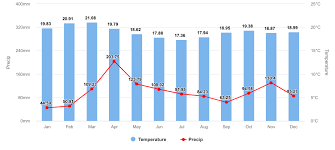Nyeri,
Tuesday, 19, 2024
KNA by Samuel Maina
While Nyeri county is not among counties expected to experience high average daytime temperatures, residents should nevertheless brace for unusually hot days in the next seven days.
The Kenya Meteorological Department (KMD) seven-day weather forecast for the period running from March 19 to March 25 shows the county (which lies in the highlands east of the Rift Valley) will likely experience sunny mornings and slight showers in the afternoon over a few places.
The county is expected to record maximum day temperatures of 31˚c with night temperatures expected to dip to an average of 10˚ c.“Mornings are likely to be generally sunny though light rains may occur over a few places.
Average night-time (minimum) temperatures are likely to be low (less than 10 ˚c) over some parts of Nyandarua, Laikipia, Nyeri, Murang’a and Kirinyaga counties,” reads part of the weather forecast advisory.
Among areas expected to experience extremely high temperatures during the next few days include Lodwar (40 ˚c), Garissa (39˚c centigrade), Mandera (40 ˚ c) Lamu (36 ˚ c) Msabaha (35˚) Suba (35˚c), Malindi (35 ˚), Makindu (35 ˚ c) and Mombasa (35 ˚c).
“High average daytime (maximum) temperatures of more than 30 ˚C will be experienced in a number of counties including Turkana, Samburu, Marsabit, Mandera, Wajir, Isiolo, Garissa, Tana River, Lamu, Kilifi, Mombasa, Kwale, Taita Taveta, Kajiado, Makueni, Kitui, Nairobi, Laikipia, Baringo, West Pokot, Bungoma, Kakamega, Busia, Vihiga and Narok,” continues the report.
Nyeri County Director of Meteorological Services John Muiruri has clarified that the high day time temperatures will continue until the last week of this month when the country is expected to experience the onset of the long rains.
Muiruri has said farmers need not be worried by the apparent delay of the rains and emphasized that the first downpour was slated towards the beginning of the fourth week of March.
However, unlike the just concluded short rains that were characterised by flooding in many parts of the country, this year’s March-April-May rains will be slightly above normal and therefore ideal for farming.
“We expect the long rains to begin towards the beginning of next week though they will start gradually before increasing in intensity as the days go by. This time round we expect the rains not to cause any havoc like last year as they will be slightly above normal,” he has told KNA.
Nyeri is among counties that receive above normal rains that range between 1,100 mm to 1,400 mm annually. In its latest report released last month, The Intergovernmental Authority on Development’s (Igad) Climate Prediction and Applications Centre (ICPAC) predicts that the long rains will be above-average.With the forecast’s probability rating between 55 and 65 per cent, Igad says countries that will benefit from the rains include Kenya, Somalia, southern Ethiopia, southern Sudan, Uganda, Burundi, Rwanda and north-western Tanzania.
The highest probabilities are expected in Central and Western Kenya and in the border areas between Ethiopia, Kenya and Uganda.
“The predicted above-average rainfall is a significant turnaround from the recent dry spells that have caused immense hardship,” said ICPAC Director Dr Guleid Artan.
“While the food security situation may improve with wetter than usual conditions, it is important to remember the multiple challenges facing the region, including the historic drought in 2020-2022, conflicts in various parts of the region such as Sudan, and El Nino-induced floods at the end of 2023.
This has weakened the coping capacity of communities, leaving them highly vulnerable to food insecurity. The likelihood of flooding during the 2024 March to May season in parts of the region could therefore lead to a deterioration of food security in localized areas,” he added.Elsewhere, the 66th Greater Horn of Africa Climate Outlook Forum (GHACOF66) recent findings show some parts of the region may experience an early to normal onset of rainfall between March and May.
These areas include northern and north-eastern Tanzania, eastern Rwanda, southern and western Uganda, western Kenya, south-western Somalia and some parts of south-central Ethiopia.
Courtesy; KNA





